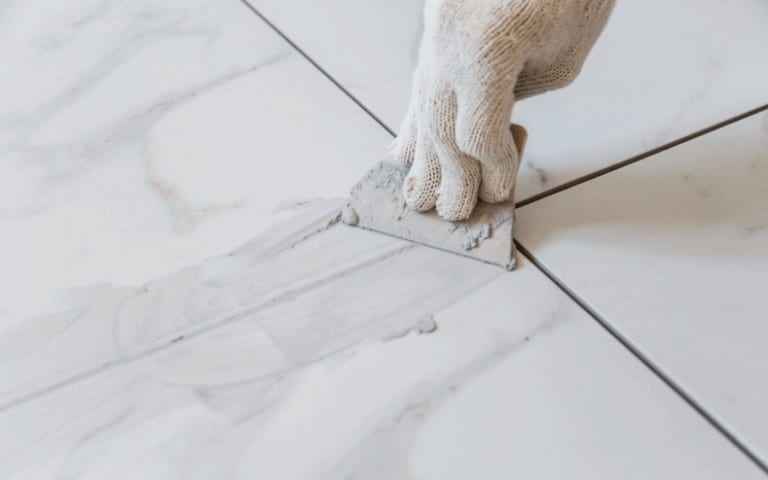Picture this: you’ve painstakingly chosen the perfect tiles for your bathroom floor, creating a beautiful mosaic that reflects your personal style. But the final touch, the grout, can make or break your vision. Should you go for sanded or unsanded grout? It’s a common dilemma for many homeowners, and the answer depends on the specific characteristics of your bathroom and your desired aesthetic.

Image: www.tilecleaning.org
This guide delves into the world of grout, exploring the pros and cons of each type to help you make an informed decision. We’ll uncover the secrets behind each option, considering everything from joint size to traffic volume, so you can confidently select the grout that best suits your needs.
Understanding the Key Players: Sanded vs. Unsanded Grout
Let’s start with the basics. Both sanded and unsanded grout are used to fill the gaps between tiles, offering a robust and water-resistant seal. But they differ in their composition and application.
Sanded Grout: Embracing Strength and Versatility
Sanded grout, as the name suggests, is made with sand. This addition dramatically increases its strength, making it ideal for wider tile joints, typically those exceeding 1/8 inch. The sand particles enhance the grout’s structural integrity, preventing cracking and ensuring a durable finish, even in high-traffic areas.
Unsanded Grout: The Perfect Partner for Slim Lines
Unsanded grout, on the other hand, lacks the sand component. This makes it perfect for narrower grout lines, less than 1/8 inch. The absence of sand ensures a smoother, more polished surface, visually enhancing smaller tiles and minimalist designs.

Image: floorcarekits.com
Why Choose Sanded Grout?
Sanded grout is the robust workhorse of the grout world, offering a range of benefits:
- Enhanced Strength: The sand particles create a strong, durable bond, making it suitable for high-traffic areas like bathroom floors.
- Wider Joint Size: Its strength allows it to withstand the pressure of wide grout lines, exceeding 1/8 inch, without cracking or crumbling.
- Cost-Effective: Sanded grout is often more affordable than its unsanded counterpart.
- Versatile: Sanded grout can be used on various tile types, including ceramic, porcelain, and natural stone.
Why Choose Unsanded Grout?
For a clean, sleek finish, unsanded grout is the preferred choice. Here’s why:
- Smooth Finish: Unsanded grout offers a smooth surface, highlighting the elegance of small grout lines and smaller tiles.
- Ideal for Narrow Joints: It is perfect for tile joints less than 1/8 inch, creating a seamless and visually pleasing effect.
- Easier to Clean: The smooth surface repels dirt and debris, making maintenance a breeze.
When Should You Opt for Sanded Grout?
- Large Tile Joints: If you are planning on using tile with wide gaps, exceeding 1/8 inch, then sanded grout is the most suitable option.
- High-Traffic Areas: For areas with heavy foot traffic, such as bathroom floors, the strength and durability of sanded grout are essential.
- Budget-Conscious Choice: Sanded grout is generally more affordable than unsanded grout.
When Should You Opt for Unsanded Grout?
- Small Tile Joints: If you are working with tiles that have narrow grout lines, less than 1/8 inch, then unsanded grout will offer a flawless finish.
- Minimalist Aesthetic: For modern or minimalist designs, the smooth surface of unsanded grout enhances the overall aesthetic.
- Easy Maintenance: The smooth, non-porous surface of unsanded grout repels dirt and is easier to clean.
Exploring the Application Process: Tips for Success
Choosing the right grout is only half the battle. Proper application is key to a durable and aesthetically pleasing finish.
- Preparing for Success: Start by thoroughly cleaning the tile surface and ensuring the tiles are level. Apply a primer to improve adhesion, especially on porous tiles.
- Mixing It Right: Follow the manufacturer’s instructions carefully for mixing the grout. Add water gradually, avoiding a runny consistency.
- Applying with Precision: Use a grout float to apply the grout, working it into the joints at a consistent depth. Remove excess grout promptly to prevent staining.
- Leaving it to Cure: Allow the grout to cure completely as per the manufacturer’s recommendations.
Expert Insights: The Voice of Experience
“Choosing the right grout is crucial for a long-lasting and visually appealing bathroom,” says renowned tile installer and expert, John Smith. “Always consider the size of the grout lines, the traffic volume, and the overall aesthetic when making your decision.”
He also emphasizes the importance of quality grout and proper installation: “Using premium grout from reputable brands and following proper techniques ensures a robust and beautiful finish. Remember, grout is not just about filling in gaps, it’s about holding your entire floor together.”
Sanded Or Unsanded Grout For Bathroom Floor
Taking Action: Choosing Your Grout Path
Now that you have a comprehensive understanding of sanded and unsanded grout, it’s time to make your choice. Reflect on the specific needs of your bathroom – the tile size, intended use, and desired aesthetic.
Do your research, read reviews, and seek advice from a trusted tile installer. With careful planning and the right grout, you can create a bathroom floor that exudes both beauty and durability for years to come.






